- remind me tomorrow
- remind me next week
- never remind me
The X Button
Gaiden Guided
by Todd Ciolek,

It's always sad to see a game company shut down, and most game companies don't have the history, the potential, and the parade of memorable characters that Hudson Soft does. And on March 1, Hudson ended its run. It'll soldier on as part of Konami, and its logo will endure with Konami's name beneath that little Hudson Bee. The two companies have collaborated many times before (Hudson even co-developed Suikoden V), but this truly ends Hudson's 38 years of business.
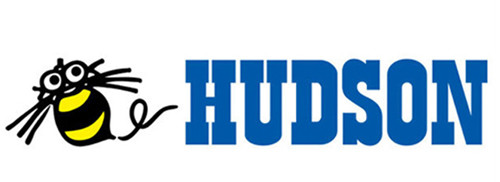
Hudson was never a major force as far as most American kids were concerned. We knew of Adventure Island, we might've owned Milon's Secret Castle, and we sure liked Bomberman when enough people joined in. But Hudson didn't catch us in the same way as Capcom and Konami and the red elliptical aegis of Nintendo. Perhaps this stemmed from Hudson being yet another company that was much more prominent in Japan than it ever was overseas. Hudson was Nintendo's first third-party publisher in Japan, and the company quickly established itself with Star Soldier, specialized controllers, and the button-slamming skills of Takahashi Meijin. Hudson even pioneered game-related anime with the 1986 film (and shameless product spotlight) Running Boy Star Soldier no Himitsu, which premiered on a double bill with Nintendo's Super Mario Bros. anime flick. Meanwhile, kids in North America and Europe only knew Takahashi Meijin as that goofy-mouthed “Master Higgins” from Adventure Island. And the only Hudson-backed anime they saw were the commercials for Mendel Palace and Xexyz.
So it went with other Hudson Soft hits. The PC Engine, a joint venture of NEC and Hudson, was a success in Japan but a marginalized third-placer in the U.S., despite the appeal of Hudson's Bonk games. A similar fate befell Tengai Makyo, an RPG series set in a medieval Japan cleverly and bizarrely distorted by the perspective of a completely fictional Western author. It was nearly the equal of Final Fantasy and Lunar in the 1990s, but cultural barriers and ridiculous stereotypes kept Tengai Makyo from coming West, especially when the fourth game in the series was based in a hilariously improper vision of 19th-century America. At most, these shores might've seen the Tengai Makyo fighting game Kabuki Klash in arcades.
And so Hudson Soft drifts into history, much like some used CD store two towns over. You went there maybe once or twice, but the only thing you ever bought was a Belly album because it was two dollars and you hadn't heard “Feed the Tree” in years. Then one day you drove by and noticed that the store was gone. And it didn't feel right.
It's too late to save Hudson now, but it's not too late to appreciate what they did. So go gather your friends for some Bomberman. Pick up a Bonk game. Survive The Adventures of Dino-Riki as long as you can. Try to beat Xexyz without skipping any levels. Hunt down Adventure Island IV, an explorative and Japan-only installment of the series. Trudge into a Tengai Makyo game, even if it's not in English. Grab a copy of Lost in Shadow, an Ico-ish Wii title that was Hudson's last notable release. That'll feel right.
NEWS
STREET FIGHTER X TEKKEN UPSETS PLAYERS BEFORE IT'S EVEN OUT
So what's getting us all mad this week? Capcom. There was already a bit of resentment brewing over the company's announcement that Street Fighter X Tekken, arriving for the PlayStation 3 and Xbox 360 this week, would hit the PS Vita in the fall with twelve extra characters. Many people assumed that Capcom would later release those characters as downloads for the PlayStation 3 and Xbox 360 versions. Some copies of Street Fighter X Tekken shipped (or leaked) early, and fans soon discovered that the bonus characters are already in the game. Curiously, Pac-Man and a tubby Mega Man are locked away in the Xbox 360 game as well as the PS3 one, even though they were said to be exclusive to the latter.
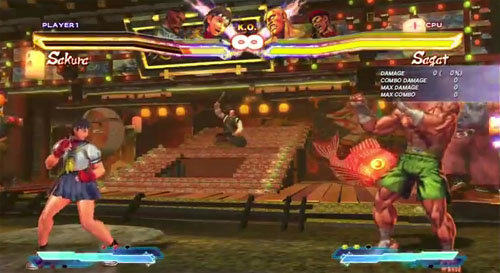
Granted, some of the characters don't look finished yet—Elena seems just a little off, being the game's only bonus Street Fighter character who wasn't ported over from Street Fighter IV. This hasn't stopped fans from complaining long and loud about the temerity of a company charging extra to unlock content that's already in a game. Capcom's official statement confirms that the characters will be downloadable in the fall, and mentions that they're on the disc to “ensure for a smooth transition.” Capcom notably doesn't say how much the twelve extra characters will cost, and they may be thinking carefully on that point. We've already seen that players tolerate bonus material that's…well, a bonus, but they're less forgiving when they have to pay to unlock something they already own.
Capcom incurred more spite when it was revealed that the Xbox 360 version of Street Fighter X Tekken doesn't allow two local players to take part in tag-team matches online. The PlayStation 3 version lets you sit down with a friend in person and use one PSN account to fight online, but Xbox Live apparently doesn't permit that. According to Capcom, this won't be fixed with a patch.

To end this on a lighter note, it's good to see references aplenty in Street Fighter X Tekken. Yet it's also a little mean-spirited for Dan, who's only the tutorial mode instructor here, to mock SNK's Terry Bogard now. Sure, Capcom, make fun of SNK. You had your fun with your SNK-Capcom crossovers, and now you think that you can just throw out SNK like an old controller now that you've got Tekken to cuddle up with. Hmph.
AN ALLEGEDLY POPULAR VIRTUA FIGHTER STEPS INTO DEAD OR ALIVE 5
Dead or Alive 5 director Yosuke Hayashi was a tad vague about mixing the series with another fighter (see the interview below), but now the secret's out. While not a full-blown crossover, the next Dead or Alive will feature Akira Yuki, Virtua Fighter's lead. While some may consider Akira a pretty bland choice and others may be shocked that Tecmo didn't borrow one of Virtua Fighter's female characters, he could be only the first of several Virtua Fighter loans. At the least, it gives Sega some extra push for Virtua Fighter 5 Final Showdown's arrival on Xbox Live and the PlayStation Network this year.
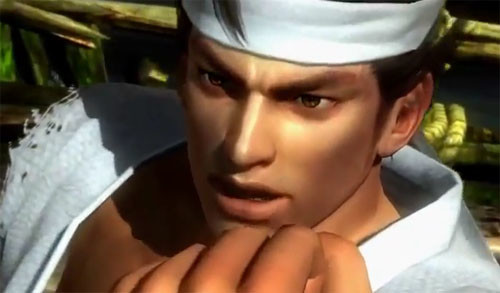
As for Dead or Alive 5, it shows off Tecmo's new emphasis on dynamic stages, whether it's a rooftop brawl interrupted by a crashing helicopter or a raft ride that hits a waterfall while two characters are hashing it out. Ryu, Ayane, Hitomi, Kasumi, and Hayate (and Akira) are the only characters shown so far, however. When other characters do emerge, Hayashi has said that Dead or Alive 5's visual style will tone down the ridiculously pneumatic sex-bomb designs the series is known for, opting instead for something “more high class.” Still, this doesn't keep Kasumi's skirt from flapping around in her exhibition match against Akira.
PERSONA 4 FIGHTER GETS AN ALL-NEW, ALL-MYSTERIOUS CHARACTER
Since this column's already overloaded with fighting-game news, here's something from Persona 4: Arena. All of the game's previously unveiled characters came from Persona 3 or 4, though many of their outfits were redesigned for this upcoming fighter from Atlus and Arc System Works. However, the latest addition is a woman named Labrys, and she's largely new to Persona.
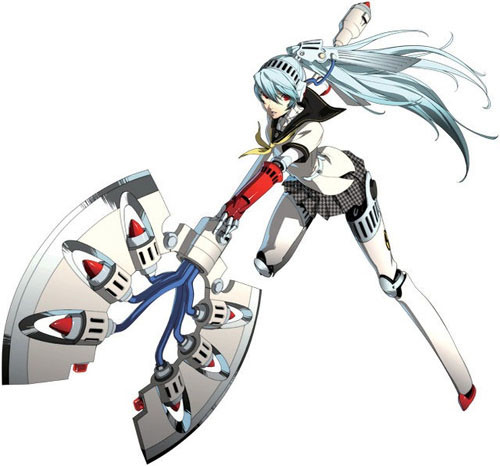
Described as a self-appointed student-council leader, Labrys appears to be the same brand of footless android as Persona 3's Aigis, and her origins reportedly lie in a radio drama based on Persona 3. She wields a huge and unorthodoxly high-tech axe in battle, and she's wearing the uniform of Yasogami High, the same school attended by the cast of Persona 4. So who is she? And will she appear in the upcoming Persona 4: The Golden? Right now she's in the arcade version of Persona 4: Arena (or The Ultimate in Mayonaka Arena, as it's called in Japan), and she'll be playable in the game's Xbox 360 and PlayStation 3 ports this summer. And then she'll probably raise even more questions.
IN BRIEF: SOL TRIGGER IS ANNOUNCED, DARKSTALKERS 4 IS RUMORED
Imageepoch, developer of Luminous Arc and 7th Dragon, has another RPG in store for the PSP. It's called Sol Trigger, it's written by Final Fantasy's Kazushige Nojima, and it's apparently all about revolutionaries. The characters, designed by manga artist Shuji Sogabe, all use magi-mechanized Sol Arms as their weapons: protagonist Farrell has a sword, his friend Emma has a gun, and his other friend Walter has a sickle. Other details are scarce, but Sol Trigger's deep enough in development to have a summertime release date in Japan.
Rumors of new Darkstalkers games inevitably let me down, but I'm compelled to report every one of them. The latest comes from Venture Beat, and it suggests that a fourth Darkstalkers started development last year under the guidance of Street Fighter producer Yoshinori Ono, who's utilizing the same engine that powers Street Fighter X Tekken. Tales of Darkstalkers 4 have emerged many times in the 12 years since Darkstalkers 3, but Venture Beat reports that this news comes from the same source that leaked entirely accurate details about Resident Evil 6.
INTERVIEW: NINJA GAIDEN 3'S YOSUKE HAYASHI
Ninja Gaiden 3 might surprise you shortly into its first stage. After diving into a London block infested with terrorists, franchise hero Ryu Hayabusa carves up dozens of enemies with merciless, bloody abandon. Then he's faced with an uncommon sight in the Ninja Gaiden games: one terrorist stands with his hands in the air, begging Ryu to spare his life. His pleas and mentions of his family do not a bit of good, though. Whether the player likes it or not, Ryu has to kill this unarmed man to move forward in the game.
It's all part of Ninja Gaiden 3's attempt to answer a question that director Yosuke Hayashi saw posed by the previous games in the series—and by many of today's gruesome crowd-pleasers. Is Ryu really justified in murdering hundreds of semi-competent foot soldiers in his fight against an international demon cabal? And if so, just what sort of morality is a game like this endorsing? Naturally, these themes are tested in an action game honed with the same care as the two previous Ninja Gaidens, balancing on that ridge between a satisfying challenge and pure frustration. Aside from the narrative, Ninja Gaiden 3 also plays with Ryu's powers by having him absorb his Dragon Sword into his arm, awakening all sorts of strange possibilities.
We'll find out if Ninja Gaiden 3's attempt at drama pays off very shortly, as the game arrives on the Xbox 360 and PlayStation 3 in two weeks. But we still couldn't resist tossing a few questions at Hayashi. First joining Tecmo with Dead or Alive 4, he directed Ninja Gaiden Sigma as well as the DS spin-off Dragon Sword, and he's currently at the helm of the company's two biggest franchises.
Where did you get the idea to take a more dramatic approach with Ninja Gaiden 3?
Yosuke Hayashi: From the get-go with Ninja Gaiden, we've been making games where the controllability was really good, but there wasn't much of an emotional connection with the player. Looking at this generation and the games that are out there, the standard for what's required is an emotional connection. In that regard, we felt that we should take what we've had and make it emotionally deeper.
How did you start working with Masato Kato, the writer of the original Ninja Gaiden NES games? Is he including any references to the original trilogy?
When we started development for Ninja Gaiden 3 and thought about reinventing Ryu Hayabusa for the game, we decided “Who better to do it than the writer of the original game?” We spoke to him and he was very positive about the project and he helped us out a lot. Ninja Gaiden 3 can be enjoyed as a stand-alone game, but of course for our fans who've played the old games, we've put a few little touches in there.

Ninja Gaiden has a reputation for being challenging. How do you refine the game without driving away casual players?
Well, we've made it difficult for a reason. For this game, we have high and low difficulties matched to different play styles. We don't so much measure if a game is too hard or too easy. We understand that there's a wide spectrum of players that get into the game, and they have different skill levels.
In the NES versions, we saw them as cinematic action games at the time. But with the new Xbox games, they've been more about the challenge. With Ninja Gaiden 3, it involves the whole sphere of Ninja Gaiden games, from the NES up until now.

How did your work on Metroid: Other M influence Ninja Gaiden 3?
In Metroid Other M, we worked with [Yoshio] Sakamoto from Nintendo. One of the biggest things we learned from him was in the way he always used to say “There is emotion in every human being.” He is always aware that there are fine and complex emotions in each human character. Up to now, we've made games that are mostly about sex and violence—easily understood emotions that are at two extreme ends of a scale. But the things we learned with Other M, about human emotion and human complexity, we'll try to explore that.
What sort of character mix will Dead or Alive 5 have? Are you planning to add new characters?
We can't give an exact number, but we'll have enough characters to keep players satisfied, and we'll have new characters as well.
You mentioned that you're making Dead or Alive's stages resemble a big action-movie climax. What films in particular inspired this?
We haven't been inspired by a certain film or director. It's more a blending of different kinds of entertainment.
If you had to cross Dead or Alive over with another fighting series, which would you want to take on?
I think it's interesting to look into pairing it up with another 3-D fighter.
How has your perspective on games changed since you became a developer?
I was aware of Dead or Alive and Ninja Gaiden. I played the old Ninja Gaiden games on the NES, and I obviously liked them. But when you get into making the games and developing the engines, you really get to love your franchises and they become a part of you.
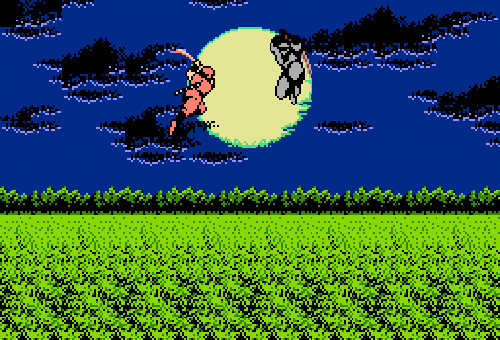
Of the original 8-bit Ninja Gaiden games, which was your favorite?
The first one was my favorite. I think it was the opening scene that did it for me, where the two ninja leap and slice at each other in mid-air.
NEXT WEEK'S RELEASES
JOURNEY Developer: thatgamecompany
Developer: thatgamecompany Publisher: SCEA Platform: PlayStation Network Players: 1-multiplayer MSRP: $14.99 Journey isn't the biggest game of the year, but it's likely to be the first 2012 title that critics dub Art with a capital A. Let's look at it. It's all about exploration instead of violence, it's set in a uniquely spare world, and it's made by thatgamecompany, a developer who's achingly indie even in name. Their site also describes Journey as “an interactive parable, an anonymous online adventure to experience a person's life passage.” So sit down, load up Journey, and get ready to tell all your friends that video games are finally a legitimate form. That'll show 'em. All of that aside, Journey is truly intriguing. The player's avatar is a robed traveler in the middle of a vast desert. There's no map, there's no extensive tutorial mode, and there's no grandiloquently narrated introduction. You're free to explore the desert as you like, stumbling onto ruins, caverns, and other players. These interactions seem especially novel, as players can't communicate by anything more than their actions and a simple yell. They're not even identified by their PlayStation Network screen names; only the symbols on a player's robe will mark them to other wanderers. Like thatgamecompany's flOw and Flower, Journey seems a relaxing, zen-garden alternative to modern games. Its world is abstract and barren, with colors that recall the muted look of Shadow of the Colossus. The simplified style only makes the game's crumbled buildings and windswept scenery all the more striking when you discover a dead civilization's remnants or encounter (and antagonize) another wayfarer. Online play being what it is, I have no doubt that we'll all find ways to annoy each other even when we can't speak or type. |
MARIO PARTY 9 Developer: Nd Cube Co. Ltd
Developer: Nd Cube Co. Ltd Publisher: Nintendo Platform: Nintendo Wii Players: 1-multiplayer MSRP: $49.99 Hudson Soft is gone, and yet they really aren't. See, the former president of Hudson, Hidetoshi Endo, is now the head of Mario Party developer ND Cube Co. Ltd, and there's a bunch of other ex-Hudson staffers on board. It makes perfect sense, since Hudson made most of the previous Mario Parties. And while you won't see Bomberman or Bonk or Hagane the cyber-ninja among the mini-games here, Mario Party 9 sticks to the path Hudson laid down many years before this. Twelve characters from various Mario games gather on playing boards, and this time they get around by taking turns behind the wheel of a large automobile. When they hit certain spaces, one of the game's 80 brief challenges will occur. The mini-games include shell bowling, jump-roping, rocket-pumping, wood-chopping, Thwomp-dodging, bumper-copters, and other diversions engineered to make you absolutely loathe your fellow players. While other competitors were the primary threat in past Mario Parties, the ninth game introduces boss battles for each level. Said bosses are familiar enemies like the Bob-omb king and Chain Chomp, and all of the players must work together during such encounters (while still gunning for the most stars in the long run). The various boards all reflect some Mario-like theme, and players can even change their layout in the middle of a session. For those who prefer to cut past the board-game rigmarole, there's a Minigame Mode that goes straight to the multiplayer matches, and players can freely enjoy any little diversion they've already unlocked on the game's main drag. The underlying concept of Mario Party 9 is the same as it ever was, and the character lineup could stand to rotate in some more obscure faces (like, say, those Porcupo things from Super Mario Bros. 2). Still, the series is usually great for multiplayer sessions. It also keeps Hudson Soft alive in spirit. Sorta. |
NARUTO SHIPPUDEN ULTIMATE NINJA STORM GENERATIONS Developer: CyberConnect2
Developer: CyberConnect2Publisher: Namco Bandai Platform: PlayStation 3/Xbox 360 Players: 1-4 MSRP: $59.99 CyberConnect2 president Hiroshi Matsuyama deserves a lot of credit. His Naruto: Ultimate Ninja games may blur into each other over time, but the man is genuinely into creating anime-based fighters. This is a field that other developers might shrug through with workmanlike apathy just to fund the game they really want to make. Meanwhile, Matsuyama dresses up in Naruto gear to give interviews and attend panels at conventions, which is well beyond the call of duty for most game-company presidents. And if it's all an act, Matsuyama keeps it up so well that it shows in CyberConnect2's Naruto fighters, which generally come through better than other titles starring the rampantly merchandized ninja hero. The latest follows a long line of Ultimate Ninja games, but that Generations part isn't just for show. It covers the first chunk of Naruo's lengthy storyline and the fast-forwarded Shippuden portion, and it's backed by some all-new animated scenes that retell the plot from different points of view. Some of these new scenes are supposedly censored a little, but kids who've followed Naruto on television are used to sanitization by now. Aside from moving a little faster, the 3-D battles of Super Naruto Shippuden Ultimate Ninja Storm Generations Hyper Fighting For Matching Service incorporate an Awakening Mode that turns characters into beastlike forms, boosting their attacks and speed. Both the young ninja and their older Shippuden incarnations are on hand in some cases, though the playable younger versions are reserved mostly for primary characters like Sasuke, Sakura, Hinata, Kiba, Rock lee, Neji, Temari, Gaara, and that blond, spiky-haired kid who's very popular nowadays. Yet there's also a great mass of ninja from the current Naruto Shippuden drama, and that pushes the roster past 70 playable characters, an impressive number even among the well-populated Naruto games.
|
|
SILENT HILL: DOWNPOUR The deck is stacked against Silent Hill: Downpour. For one thing, it's the eighth major game in a series that hasn't really pleased its fans since the fourth (or is it the third?) Silent Hill. There were ups and downs, but Konami and a string of outside developers have ensured that Silent Hill 2 remains the apex of the whole franchise. So there were doubts when Silent Hill Downpour emerged as a loosely connected spin-off developed by Vatra Games, a Czech outfit whose only previous Konami work was the quickly faded Rush'n Attack: Ex-Patriot. Then Konami decided that the best way to get the game into fans' good graces was to add an opening song by Korn. After the dust settled from that matter, people finally started to look at the actual game. Downpour tracks an escaped convict named Murphy Pendleton, and his story's supposedly set apart from those of previous Silent Hill leads. For one thing, Murphy has a good reason to avoid seeking help from the authorities, and his run from the law leads him into a previously unexplored sector of the cursed little town of Silent Hill. Murphy's journey takes him through an abandoned mine and other unpleasant ruins of a haunted Midwestern burg, encountering several unfortunate folk and hideous creatures along the way. He also encounters Silent Hill's typical bizarre shifts of reality when gloomy buildings reveal hideous mazes of sepia-hued steel. And it all somehow intersects with Murphy's criminal past. He's also armed just as lightly as the typical Silent Hill lead; his firearms are common compared to a Resident Evil game, and he can only carry one close-range weapon at a time. The soundtrack might not be all that bad, either. Despite the Korn opener and the absence of composer Akira Yamaoka, Konami's confirmed that the game at least has a song from Mary Elizabeth McGlynn. At this stage, Downpour looks very much like a Silent Hill. And in the event that it disappoints everyone, there are two more Silent Hill releases coming this month. |
TALES OF GRACES F Developer: Namco Tales Studio
Developer: Namco Tales Studio Publisher: Namco Bandai Platform: PlayStation 3 Players: 1 MSRP: $59.99 Will the Tales series finally take root in North America? Well, Tales of the Abyss and Tales of Graces F are hitting within a month of each other, so this is easily the most serious that Namco has ever been about getting the series to the West. Not that these shores will ever see the sheer volume of Tales games that swamps Japan every year, but at least we won't miss Tales of Graces. Originally released on the Wii in 2009, it was ported to the PlayStation 3 with an epilogue and more costumes, and this was the Tales of Graces F that Namco greenlit for the U.S. It's set in the world of Elfinea, where humans make a material called Arles from an element called Cryas and…OK, there's another round of confusing Tales terminology. The important this is that the game's protagonist, a fledging knight named Asbel Lhant, is forced to choose between his chivalrous profession and his duties as heir to his dead's father's lands. He's helped by his younger brother and an amnesiac girl named Sophie, plus a mathematician named Pascal and a healer named Cheria. Tales of Graces F didn't earn a sequel like Tales of Symphonia and Destiny did, but it has its strengths among the franchise's other titles. Its gameplay, driven by the Style Shift Linear Motion Battle System, allows party members to switch between two different fighting methods in the thick of combat, and the game's world is in semi-realistic scale with the characters. The side attractions include a cooking mini-game and a series of conversations between party members, the latter of which may flesh out the characters more than the main story. Namco's also offering American players downloadable costumes from Tales of Destiny and its sequel, though the Japanese version's Code Geass outfits might not make the cut. Oh well, Code Geass got enough attention already. |
YAKUZA: DEAD SOULS Developer: Sega
Developer: Sega Publisher: Sega Platform: PlayStation 3 Players: 1 MSRP: $59.99 Are zombies still the big thing with today's hip trendsetters? Or is it that the entertainment industry just thinks that zombies are the big thing? And do their solipsistic pursuits create an unstoppable cycle of undead imagery that will soon spiral into chaos like a clichéd zombie outbreak itself? Whatever's happening, it's happening in Sega's gritty gangster-adventure series. Yakuza: Dead Souls has the same stage and characters as the more realistic installments, but this time thuggish hero Kazuma Kiryu and his allies aren't accosting rival goons, grifters, and hapless citizens as they wander the streets of Kamurocho. Instead they face a full-scale zombie uprising. Kiryu, Shun Akiyama, and Goro “Mad Dog” Majima all get heavy-duty weapons to start off the game, and the fourth playable character, Ryuji Goda, has a telescoping minigun where his right arm should be. This is to say nothing of the group's improvised arsenal, which starts with baseball bats and goes all the way up to tanks and forklifts. So you can pretend it's Shenmue 3. Dead Souls doesn't neglect the social aspects that previous Yakuza titles pushed so strongly. When they're not roaming undead-filled streets, Kiryu and the others can relax with bowling, darts, ping-pong, roulette, batting cages, slot machines, dance-offs, wardrobe changes, and the company of club hostesses who, in the game's most unrealistic turn, aren't just after their money. In fact, they're among the many allies who'll accompany the player into combat, though you're limited to one partner at a time. And if you're worried that all of this cheapens the Yakuza name, rest assured that this is just an alternate-world storyline and that everything will go back to normal with Yakuza 5. |
discuss this in the forum (32 posts) |
 Developer: Vatra Games
Developer: Vatra Games